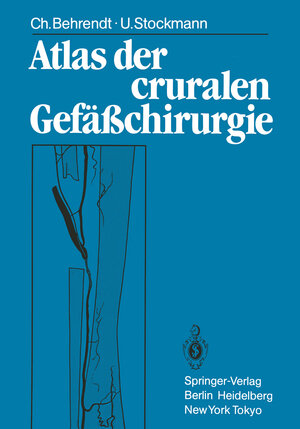
×
![Buchcover ISBN 9783642700514]()
Inhaltsverzeichnis
- 1 Grundlagen.
- 1.1 Definition des cruralen Bypass.
- 1.2 Indikation zum femoro-cruralen Bypass.
- 1.3 Crurale Chirurgie in Relation zu anderen rekonstruktiven Methoden der Gefäßchirurgie.
- 1.4 Präoperative Angiographie.
- 1.5 Postoperative angiographische Kontrollen.
- 1.5.1 Konventionelle Angiogramme.
- 1.5.2 Angiogramme über den PIDDA Katheter.
- 2 Falldemonstration.
- 2.1 Aussagekraft der präoperativen Angiographie.
- Fall 1: „Leeres“ Unterschenkelangiogramm.
- Fall 2: Nähbare und nicht nähbare Unterschenkelgefäße.
- Fall 3: Gesetz von der Symmetrie der Arteriosklerose.
- 2.2 Eindeutige Indikation zum cruralen Bypass.
- Fall 4: Anterior-Bypass.
- Fall 5: Bedeutung der Profundastrombahn.
- 2.3 Prognose des cruralen Bypass.
- Fall 6: Abstromgeschwindigkeit.
- Fall 7: Anschlingtrauma.
- Fall 8: Schichtungsphänomen.
- Fall 9: Probleme der distalen Anastomose.
- 2.4 Begründung der berechtigten Amputation.
- Fall 10: Keine Revisionsmöglichkeit.
- 2.5 Carotisstenose und crurale Rekonstruktion.
- Fall 11: Medialer Fibularis-Bypass.
- 2.6 Der laterale Zugang.
- Fall 12: Lateraler Fibularis-Bypass.
- 2.7 Frühverschluß.
- Fall 13: Operative Revision nach Streptokinase-Therapie.
- 2.8 Spätverschluß.
- Fall 14: „Atypische“ Angiographie.
- Fall 15: Verlagerung der Anastomose nach distal.
- Fall 16: „Atypische“ Angiographie. „Umsteige-Bypass“.
- 2.9 Revisionsmöglichkeiten nach Spätverschluß.
- Fall 17: Kombination aller Möglichkeiten.
- Fall 18: Verzögerte Revision.
- 2.10 Plantarphlegmone.
- Fall 19: Kunststoffinterponat bei Infekt.
- 2.11 Atypischer cruraler Bypass.
- Fall 20: Iliaco-cruraler Bypass.
- 2.12 Dilatation und Rekonstruktion.
- Fall 21: Cruro-cruraler Bypass.
- 2.13 Doppelseitiger Fibularis-Bypass.
- Fall 22: Alternative zur Doppelamputation.
- 2.14 Hilfsmittel in der cruralen Chirurgie.
- Fall 23: Anterior-Bypass mit AV-Fistel.
- 3 Schlußwort.



